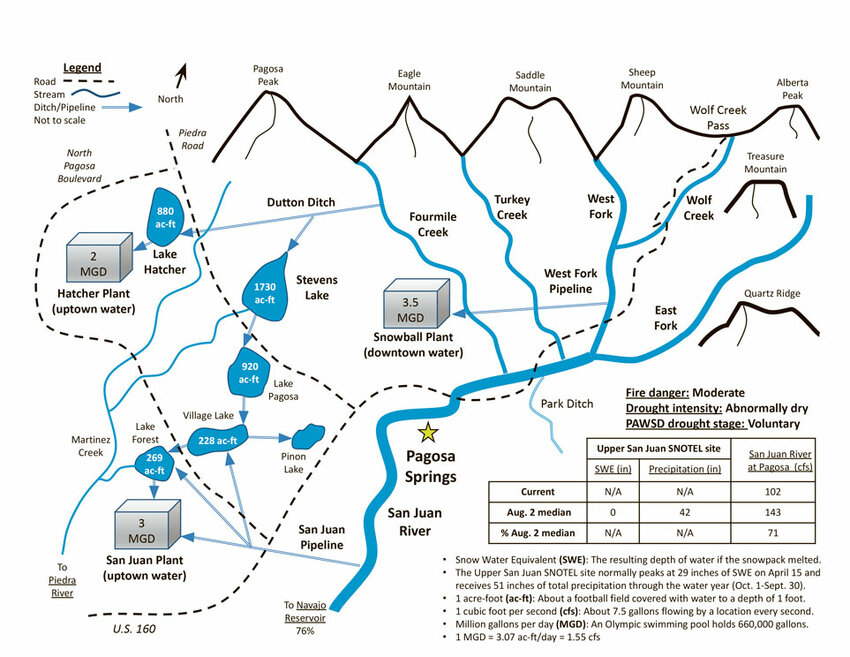
By Josh Kurz | San Juan Water Conservancy District
When you turn on a faucet in your home, where does the water come from? As a science teacher, I challenge my students to answer this question by tracing their drinking water back to the source, but they have to discuss all of the detours and stops along the way.
Since we live in the headwaters of the San Juan River, we can see our wilderness watersheds from our windshields, and we are fortunate to be the first water users in its journey downstream. Our drinking water may have been frozen in a snowfield on Saddle Mountain, plunged over Treasure Falls or paused for a few days in Fourmile Lake.
Like the ancient Puebloans, we collect, divert and store water to sustain us, but on a much larger scale. But unlike the ancient Puebloans, our modern society might not realize how living on the edge of a desert is a precarious endeavor, subject to the whims of the weather. Our flowing faucets may cause us to take clean water for granted (although members of our community that haul water or use groundwater tend to be exceptions).
Many residents in our community can receive water from an elaborate storage and distribution system that was planned, built and maintained by previous generations. But how does our local municipal and agricultural water system work, what are the threats to our water supply, and is our current water supply adequate to meet the needs of future generations?
The San Juan Water Conservancy District (SJWCD) has a mission to secure a sustainable water future for the district that encompasses all of Pagosa Springs and much of Archuleta County. Whereas the Pagosa Area Water and Sanitation District (PAWSD) focuses solely on municipal water supply and demand, the SJWCD’s mission includes all demands on our water including agricultural, recreational, environmental, as well as municipal. They also seek to educate the public about water-related issues impacting all demands on our water supply and promote water conservation. As a watershed scientist and educator who is passionate about water, I’ve partnered with the SJWCD to improve our community’s water fluency and inspire water conservation.
To boost our community’s water fluency, I’ve scheduled three water talks to unveil a water infographic that I created. The infographic spatially depicts our local municipal water storage and distribution system and condenses a host of water supply indicators into one location. Ultimately, I hope that our community embraces the infographic as a way to visualize, understand and communicate the factors that influence the quality, quantity and future of our municipal water supply.
And since I’m an educator, I created a short water quiz (https://forms.gle/HyCUUguj4juGE4FH7) so you can test your local water knowledge. But, don’t worry, it’s open-note (hint: use the water infographic) and I won’t send the results to your parents. Instead, I will be explaining the water infographic and answering any questions that you still have with the help of the SJWCD at the following public meetings:
• Aug. 3: San Juan Outdoor Club -— Pagosa Lakes Property Owners Association Clubhouse on Port Avenue at 6 p.m.
• Aug. 17: Pagosa Springs Rotary Club — The Den at noon.
• Oct. 5: Lifelong Learning Series — Ruby M. Sisson Memorial Library at 6 p.m.
I will base my effectiveness as an educator on if you can casually use acronyms like cfs, SWE and MGD in conversations with your friends and neighbors and your ability to trace your water back to your favorite mountains on the horizon. And maybe you’ll use less water, too.
I hope to see you at one of the water talks.